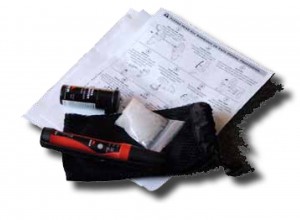Steripen

May/June 2010 ISSN-1059-6518 Volume 23 Number 3
By Frank Hubbell, DO
Steripen
The SteriPEN is a commercially available device that uses ultraviolet C (UVC) light to sterilize water.

The SteriPEN is a commercially available device that uses ultraviolet C (UVC) light to sterilize water.

 MIOX Water Purifier
MIOX Water PurifierAs we all know, the ability to produce potable water is extremely important for the outdoor enthusiast, the international traveler, and disaster response teams. There are a variety of techniques that can all be successfully used. In this issue of the WMNL, we will discuss the use of the MIOX Purifier system and hypochlorite solution.

As has already been reported by National Geographic and CNN, a simple solar method for disinfecting water using those ubiquitous clear “disposable” water bottles has been making waves. Developed by the Swiss-based aquatic research institute, EAWAG, and promoted under the banner of SODIS (short for Solar Water Disinfection), suspect water is put in clear polyethylene terephthalate (PET) bottles and left on a metal surface in the sun for six hours. The result is safe drinking water. This method of water disinfection is being used increasingly in developing countries to provide safe drinking water. Something good for any world traveler to know about….


As has been mentioned several times in previous articles, waterborne diseases are some of the most common diseases known to man. Spread primarily via the oral-fecal route when a pathogen in human or animal waste contaminates the drinking water supply, the disease-causing pathogen is then transmitted to people when they drink the water, consume food that was washed in the contaminated water or handled by dirty hands that prepared their food, or by washing their hands in the contaminated water.
The exceptions to this mode of transmission are Schistosomiasis and Naegleriasis. A common parasitic disease, Schistosomiasis is contracted by swimming in contaminated water instead of drinking it. Once the parasite is on your skin, it will make its way into your body by burrowing through your skin—in the process causing a rash known as swimmer’s itch or duck itch.
